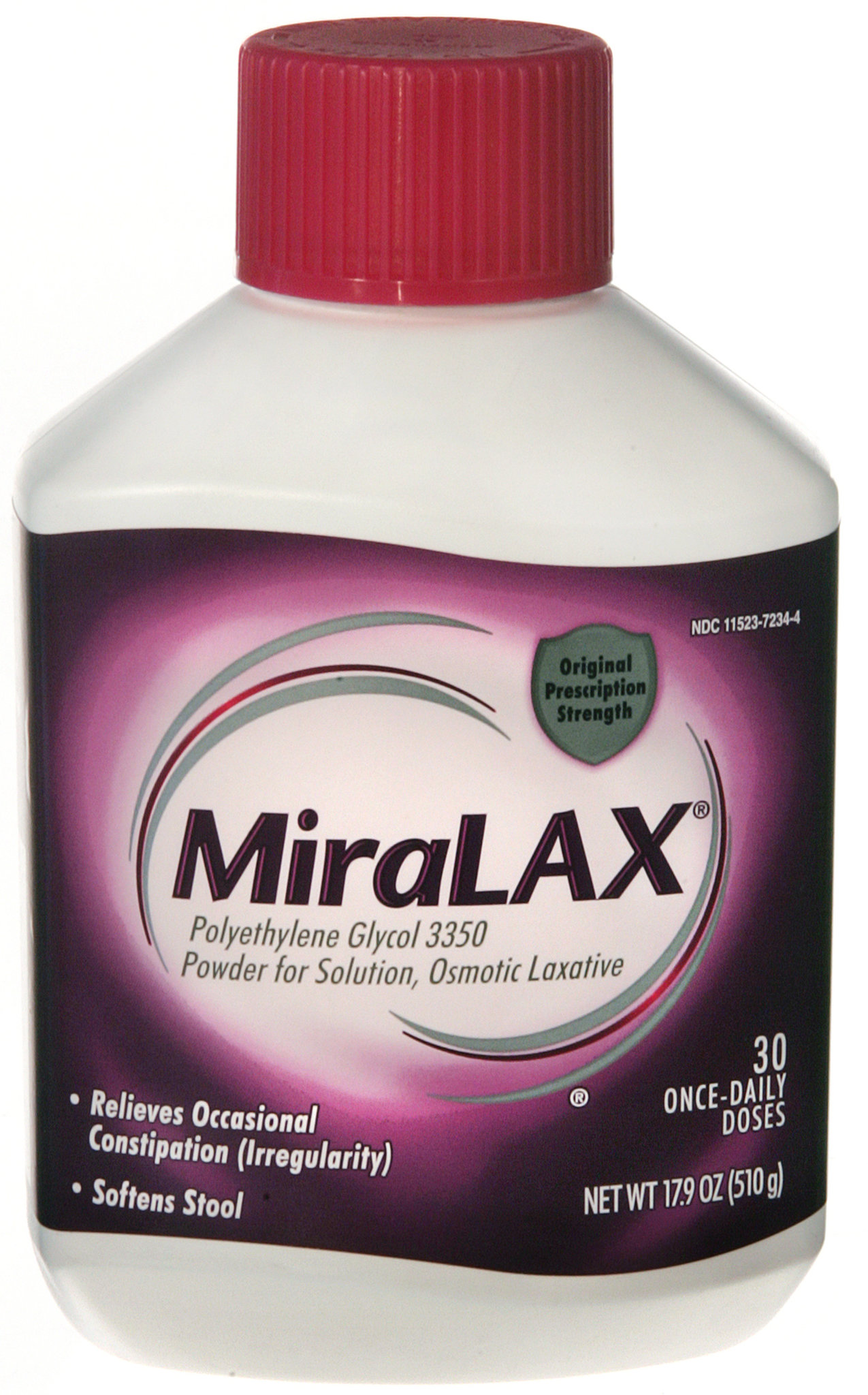MiraLAX: Long-Term Effects and Considerations
MiraLAX, the brand name for polyethylene glycol 3350, is a commonly used over-the-counter osmotic laxative for treating occasional constipation. It works by drawing water into the intestines, softening stool, and promoting bowel movements. While generally considered safe and effective for short-term use, questions arise regarding its long-term effects. Let’s delve deeper into this topic, exploring potential side effects, alternative approaches, and when to seek professional guidance.
Long-Term Side Effects of MiraLAX
MiraLAX is typically well-tolerated, but long-term use can lead to certain complications. Here’s a breakdown of the most common ones:
-
Dependence and Rebound Constipation: Over time, the body may become reliant on MiraLAX’s stimulation to trigger bowel movements. Abruptly stopping the medication can lead to rebound constipation, making it harder to have bowel movements naturally.
-
Electrolyte Imbalance: Chronic diarrhea, a potential side effect of MiraLAX overuse, can cause electrolyte imbalances. These minerals (sodium, potassium) are crucial for muscle and nerve function. Dehydration can also occur due to excessive fluid loss.
-
Nutrient Malabsorption: MiraLAX can interfere with the absorption of essential nutrients, such as calcium, magnesium, and iron, if used excessively. This can lead to deficiencies over time.
-
Unidentified Risks: Limited research exists on the long-term effects of MiraLAX, particularly in specific populations like children or pregnant women.
Factors to Consider for Long-Term Use
Several factors influence the potential for long-term side effects:
-
Dosage and Duration: Following the recommended dosage and using MiraLAX only for short periods (less than two weeks) minimizes the risk of complications.
-
Underlying Cause of Constipation: Identifying and addressing the root cause of constipation, such as dietary changes or medical conditions, is crucial to prevent reliance on laxatives.
-
Individual Health: Existing health conditions can alter how MiraLAX affects the body. Consulting a doctor before long-term use is essential.
Alternatives to MiraLAX for Long-Term Management
Several natural approaches can be explored alongside dietary and lifestyle modifications for long-term constipation management. These include:
-
Increased Fiber Intake: Aim for 25-35 grams of fiber daily from fruits, vegetables, and whole grains. Fiber promotes stool formation and regularity.
-
Hydration: Drinking plenty of fluids, especially water, keeps stools soft and eases passage.
-
Exercise: Regular physical activity stimulates gut motility and promotes bowel movements.
-
Probiotics: These supplements introduce beneficial bacteria to the gut, potentially improving gut health and regularity.
-
Stool Softeners: Medications like docusate sodium can be used short-term alongside lifestyle changes.
When to See a Doctor
Seeking medical advice is crucial if:
- Constipation persists despite using MiraLAX for more than two weeks.
- You experience severe abdominal pain, rectal bleeding, or blood in the stool.
- You have a sudden change in bowel habits.
- You have underlying medical conditions like heart disease or kidney problems.
Additional Considerations for MiraLAX Use
Understanding Constipation
Constipation is a common digestive issue characterized by infrequent or difficult bowel movements. Several factors can contribute to constipation, including:
- Diet: Lack of fiber, excessive intake of processed foods, and dehydration can all contribute to constipation.
- Lifestyle: A sedentary lifestyle, lack of exercise, and ignoring the urge to have a bowel movement can worsen constipation.
- Medications: Certain medications, like pain relievers and antidepressants, can cause constipation as a side effect.
- Medical Conditions: Underlying medical conditions like irritable bowel syndrome (IBS), hypothyroidism, and neurological disorders can also lead to constipation.
When MiraLAX Might Be Appropriate for Long-Term Use
In some cases, short-term use might not be feasible, and a doctor might recommend MiraLAX for longer periods. These scenarios include:
-
End-stage medical conditions: For patients with palliative care needs, managing constipation can improve comfort and quality of life.
-
Neurological conditions: Individuals with neurological conditions affecting bowel control may require MiraLAX for long-term management.
-
Chronic illnesses: Certain chronic illnesses can cause persistent constipation, and MiraLAX might be part of a long-term management plan under a doctor’s supervision.
Mitigating Long-Term Risks
If MiraLAX is deemed necessary for long-term use, certain strategies can help minimize potential risks:
-
Lowest Effective Dose: Always start with the lowest effective dose and adjust based on your doctor’s guidance.
-
Monitor Electrolytes: Regular blood tests can monitor electrolyte levels, allowing for adjustments in diet or supplements if needed.
-
Dietary and Lifestyle Changes: Even with MiraLAX, incorporating dietary changes like increased fiber intake and staying hydrated remains crucial for gut health.
-
Regular Doctor Consultations: Scheduling regular check-ups with your doctor allows for monitoring of long-term use and potential side effects.
Remember: MiraLAX should not be a substitute for addressing the underlying cause of constipation. Working with a doctor to identify and address the root cause is vital for long-term bowel health.
FAQ on MiraLAX Long-Term Use
Q: Is it safe to take MiraLAX every day?
A: Generally, no. MiraLAX is intended for short-term use (less than two weeks). Long-term use can lead to dependence and other complications. Discuss long-term constipation management with your doctor.
Q: Can MiraLAX cause bloating and gas?
A: Yes, bloating and gas are common side effects, especially when starting MiraLAX. These may improve over time.
Q: Are there any interactions with other medications?
A: MiraLAX may interact with certain medications. Always inform your doctor about all medications you take before starting MiraLAX.
Q: Is MiraLAX safe for pregnant or breastfeeding women?
A: While generally considered safe, consult your doctor before using MiraLAX during pregnancy or breastfeeding.
Conclusion
MiraLAX can be a helpful tool for occasional constipation. However, long-term use carries potential risks. Addressing the underlying cause of constipation and exploring lifestyle modifications are crucial for long-term bowel health. If you experience persistent constipation or any concerning side effects, consult your doctor to explore the best course of action for your individual needs.






More Stories
What goes Good with Pizza
How many Electrons Does Silicon Have
How Long Does It Take to Get a Law Degree